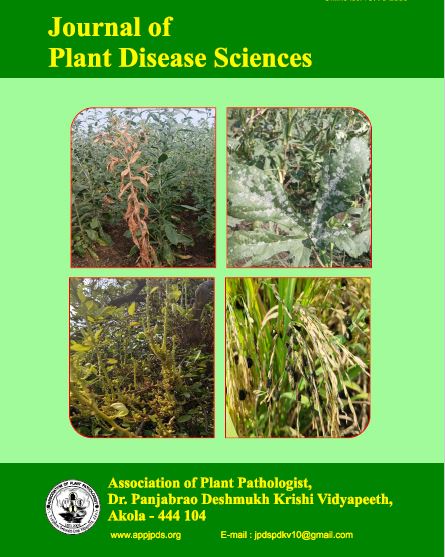STUDIES ON VIABILITY OF BACTERIAL BIOAGENTS FORMULATION IN VACUUM PACKING COMPARED TO CONVENTIONAL PACKING
DOI:
https://doi.org/10.48165/jpds.2025.20.01.02Keywords:
Viability, Bioagents, Packaging, StorageAbstract
The shelf life and viability of bacterial bioagents like Pseudomonas and Bacillus species are significantly influenced by factors such as formulation, moisture content, and resilience to adverse climatic conditions. Numerous commercial formulations of Pseudomonas and Bacillus species are widely available and commonly used for the management of soil-borne plant diseases. Understanding the optimal storage conditions is essential for maintaining a high number of viable propagules over time. This study found that vacuum packing did not provide any significant advantages over conventional packaging methods. Moreover, storing the bioagents in a refrigerator at 4 °C proved to be more effective than other storage conditions such as room temperature (27 ± 2 °C), incubator (24 ± 2 °C), and deep freezer (-20 °C).
References
Daryaei, A., Jones, E. E., Glare, T. R., & Falloon, R. E. (2016). Biochemical characteristics of Trichoderma atroviride associated with conidium fitness for biological control. Journal of Plant Disease Sciences, 7, 42–44.
Pal, K. K., & Gardener, B. M. (2006). Biological control of plant pathogens. Plant Health Instructor, 1–25. https://doi.org/10.1094/PHI-A-2006-1117-02
Cabello-Olmo, M., Barajas, M., & Encio, I. (2020). Influence of storage temperature and packaging on bacteria and yeast viability in plant-based fermented food. Foods, 9(3), 302. https://doi.org/10.3390/foods9030302
Park, K., Park, J. W., Lee, S. W., & Balaraju, K. (2013). Induced suppression of soft rot disease in tobacco by combined application of Bacillus subtilis strain B4 and chemical elicitor BTH. Biocontrol Science and Technology, 23, 968–979.
Farhat, H., Urooj, S., Shafique, S., Sultana, F. H., & Ehteshamul-Haque, S. (2017). Rhizobia suppress the root knot nematode and root rotting fungi on mungbean. International Journal of Biological Research, 5, 71–75.
Peng, D., Li, S., Wang, J., Chen, C., & Zhou, M. (2014). Integrated biological and chemical control of rice sheath blight by Bacillus subtilis NJ-18 and jinggangmycin. Pest Management Science, 70, 258–263.
Suprapta, D. N. (2012). Potential of microbial antagonists as biocontrol agents against plant fungal pathogens. Journal of the International Society for Southeast Asian Agricultural Sciences, 18, 1–8.
Ghorbanpour, M., Omidvari, M., Abbaszadeh, P., Dahaji, S. M. M., Omidvar, R. K., & Kariman, K. (2018). Mechanisms underlying the protective effects of beneficial fungi against plant diseases. Biological Control, 117, 147–157.
Whipps, J. M. (2001). Microbial interactions and biocontrol in the rhizosphere. Journal of Experimental Botany, 52, 487–511.

